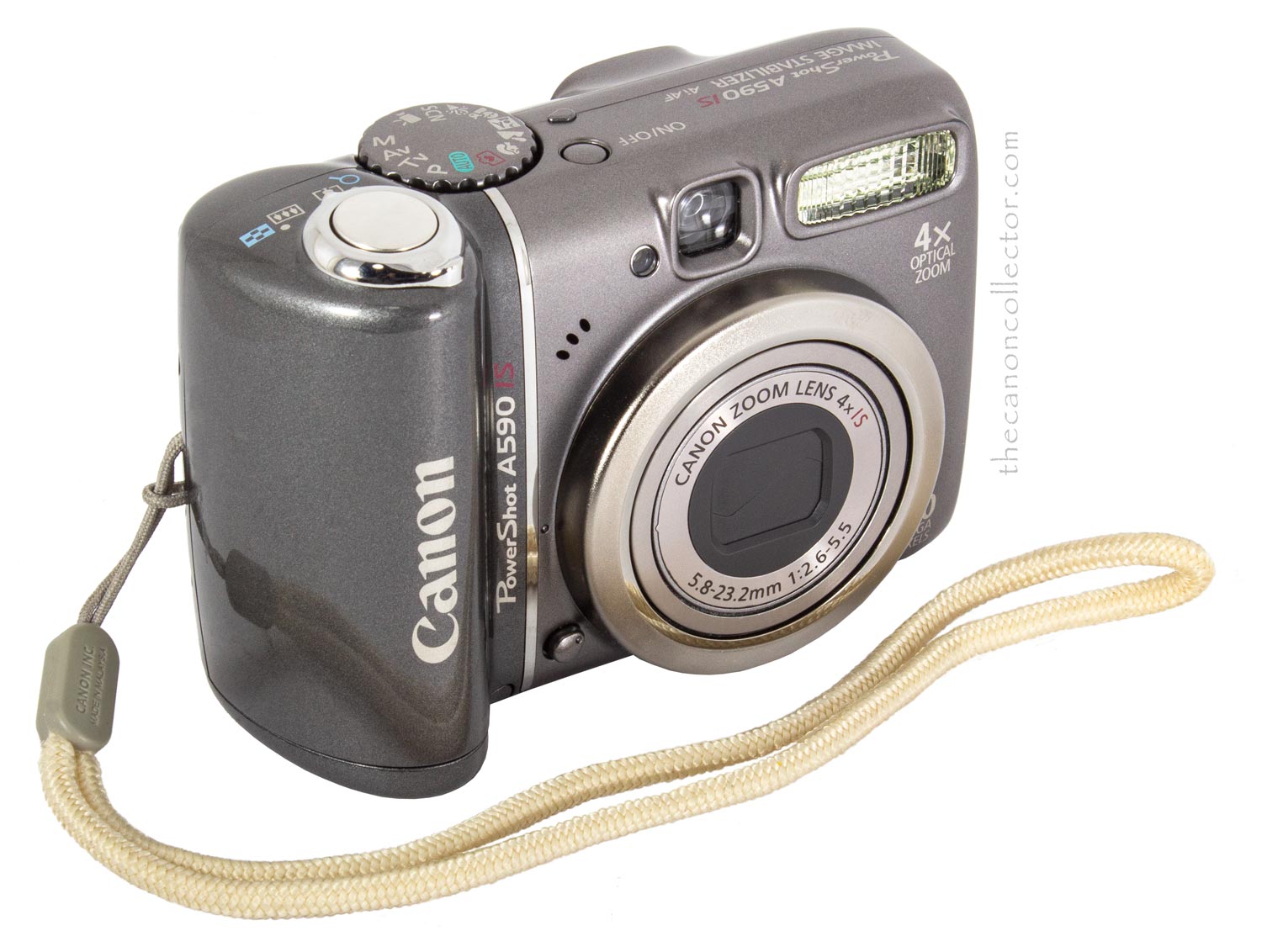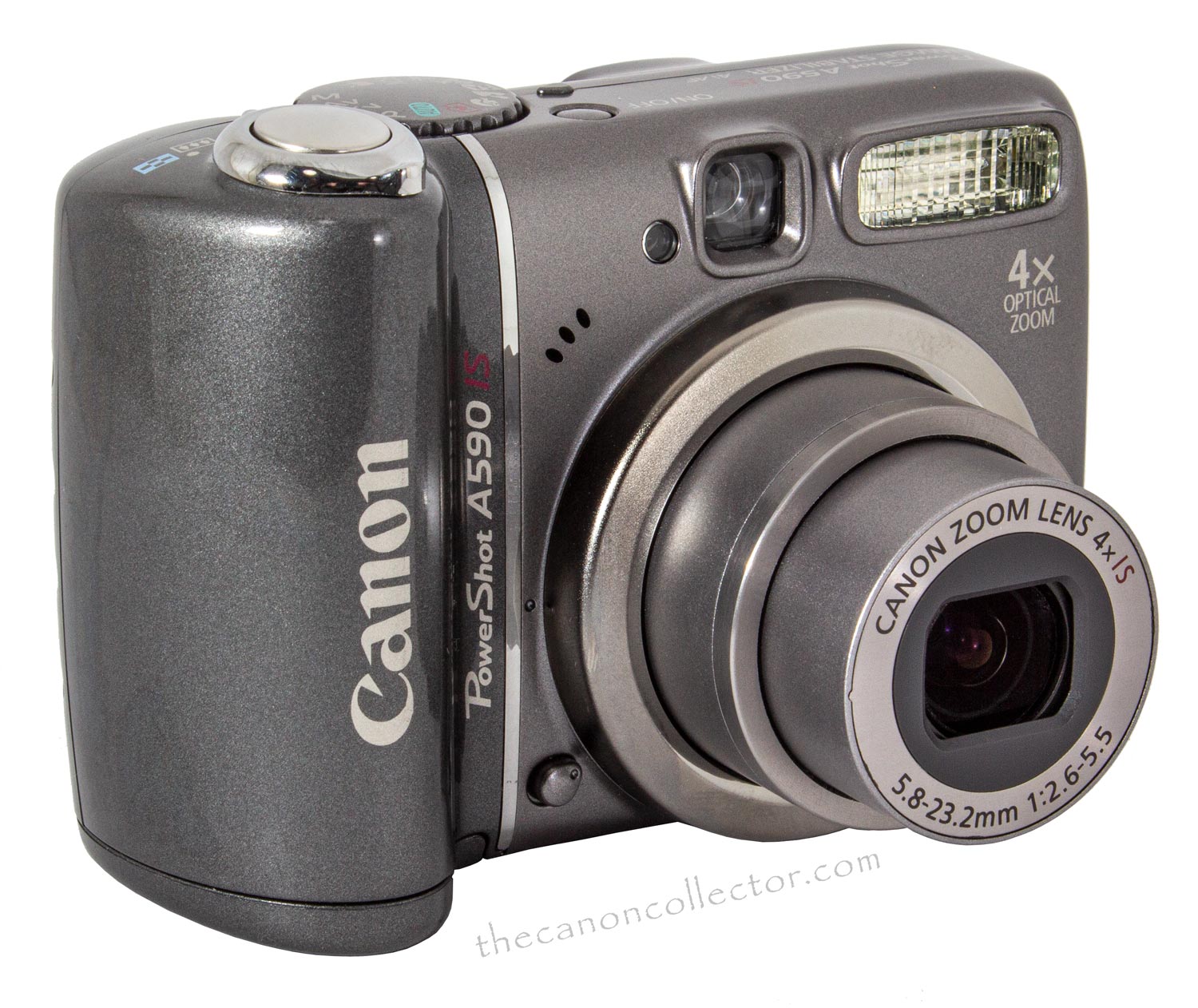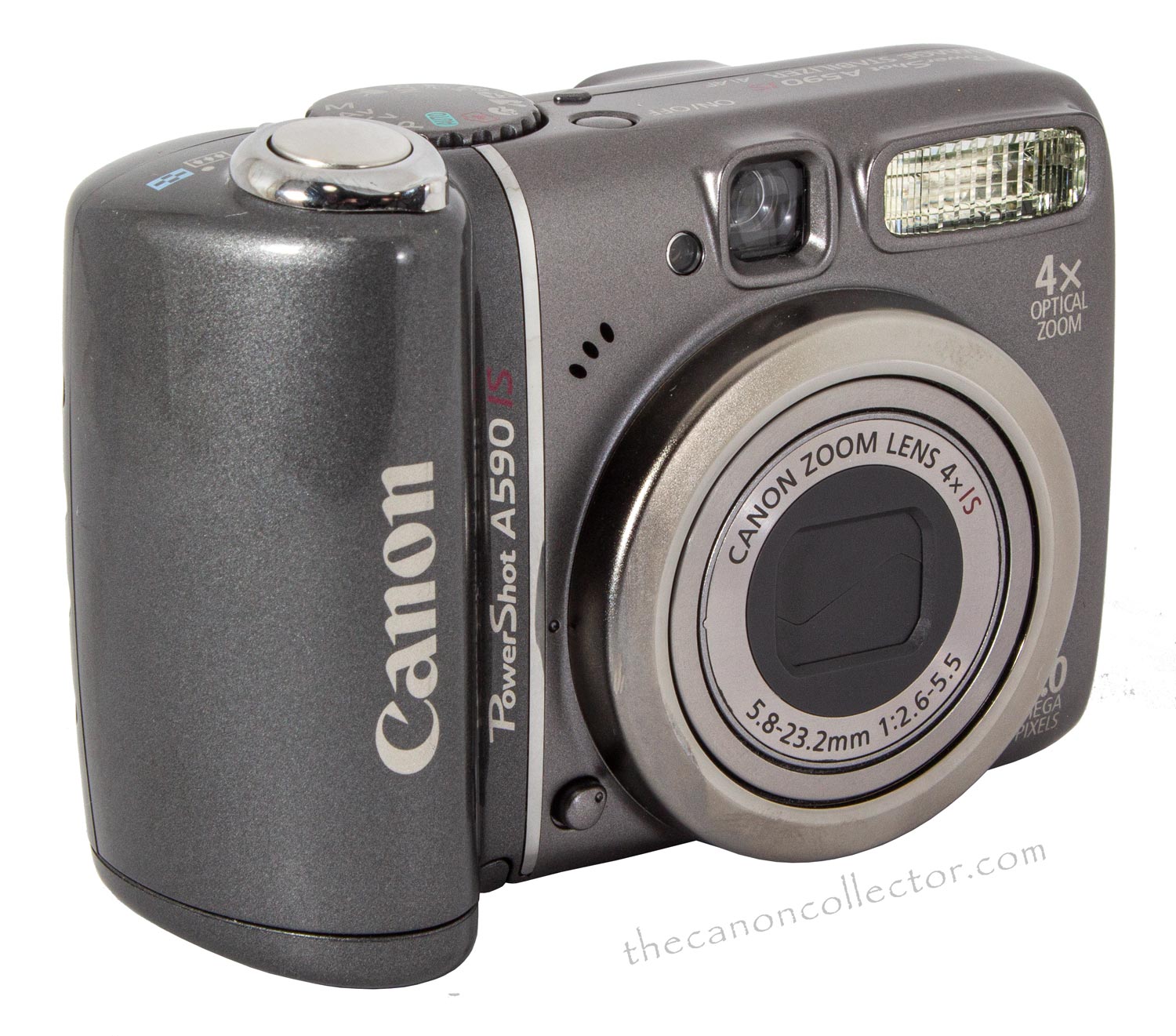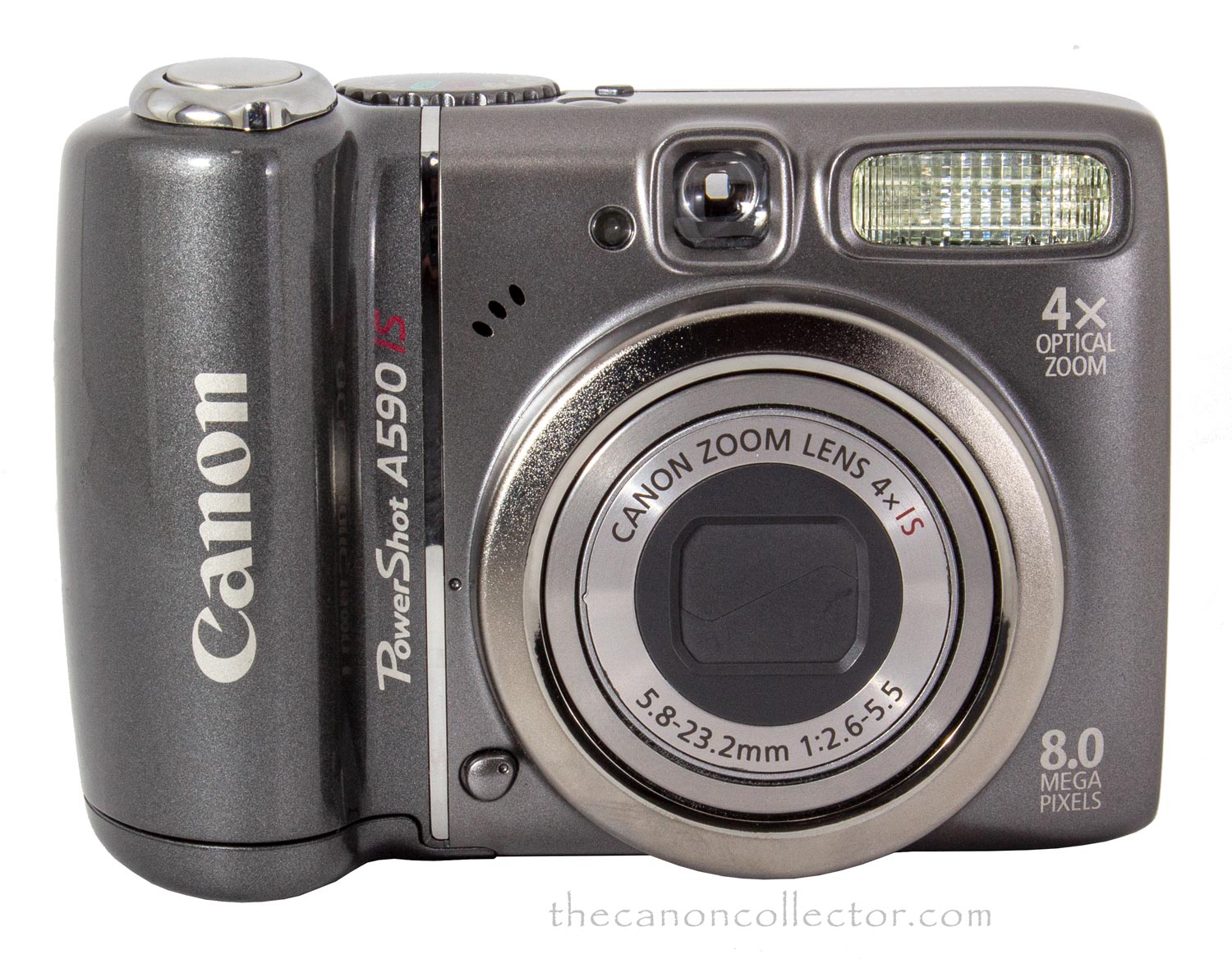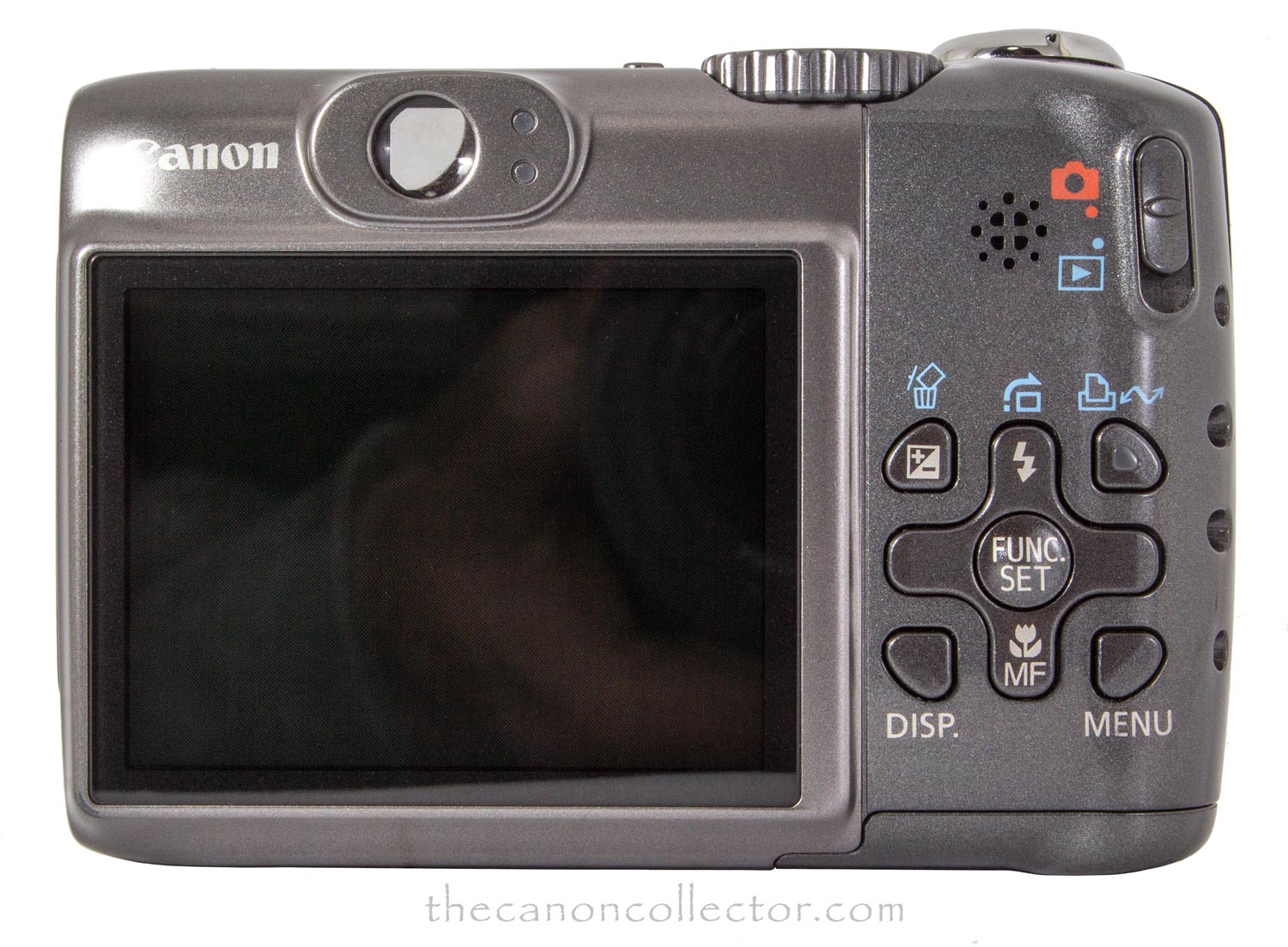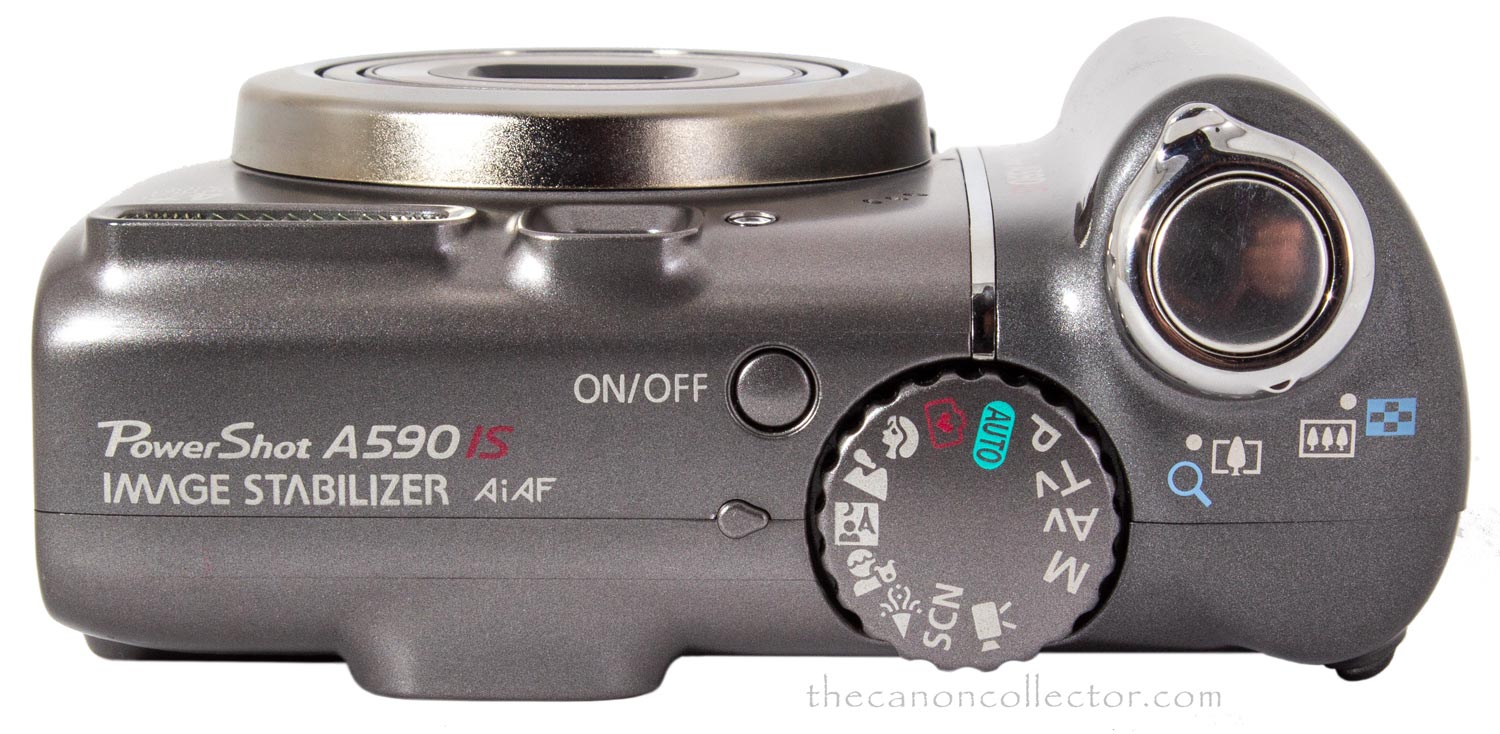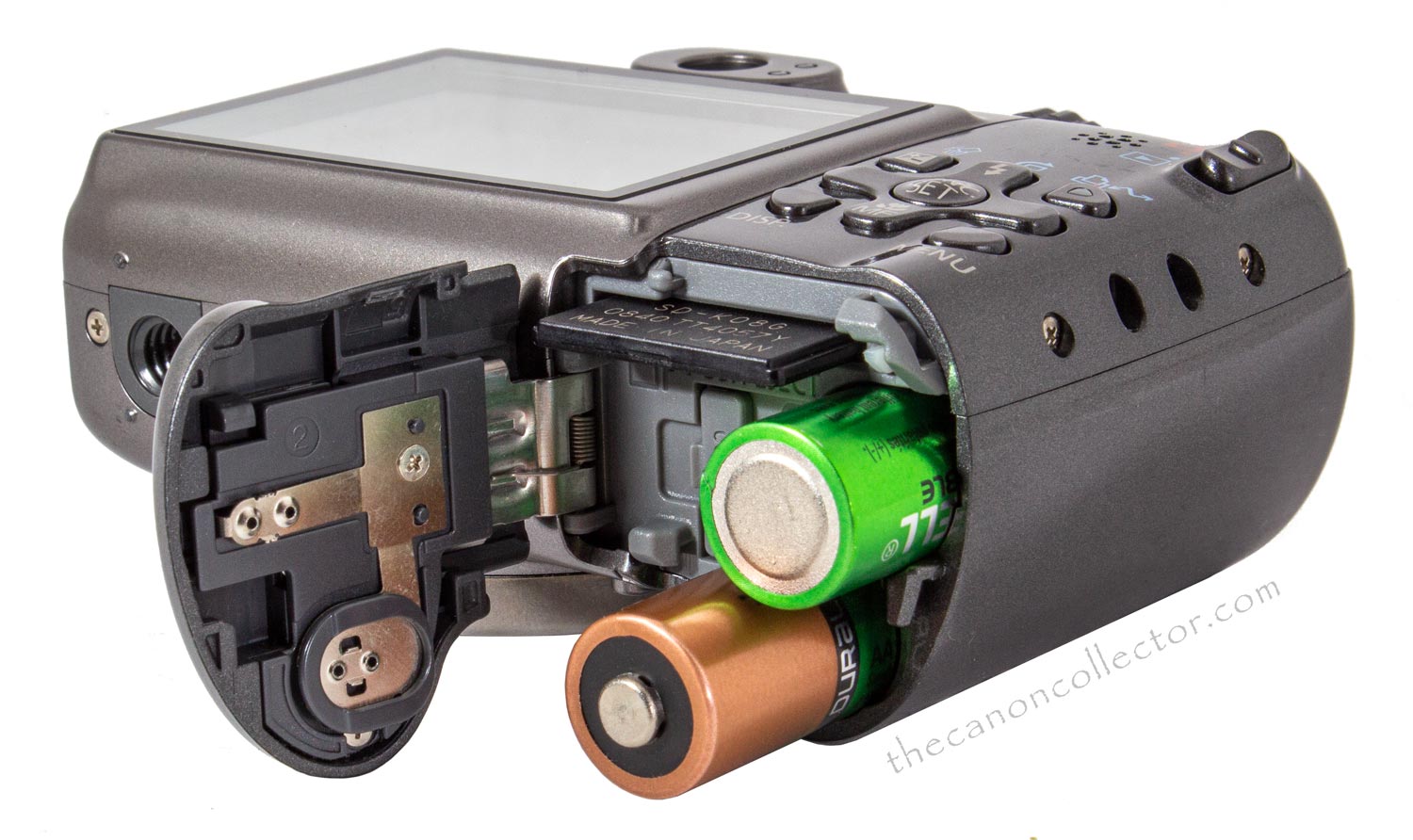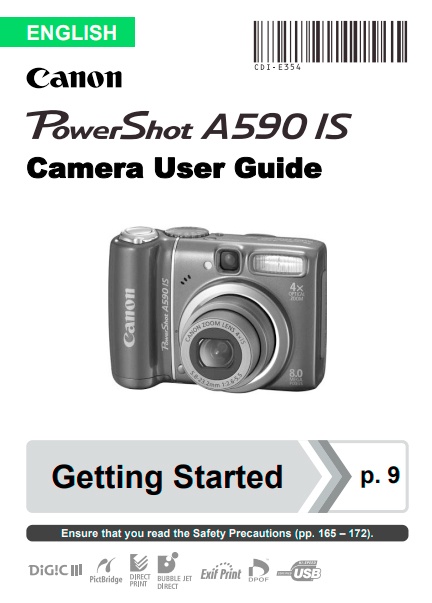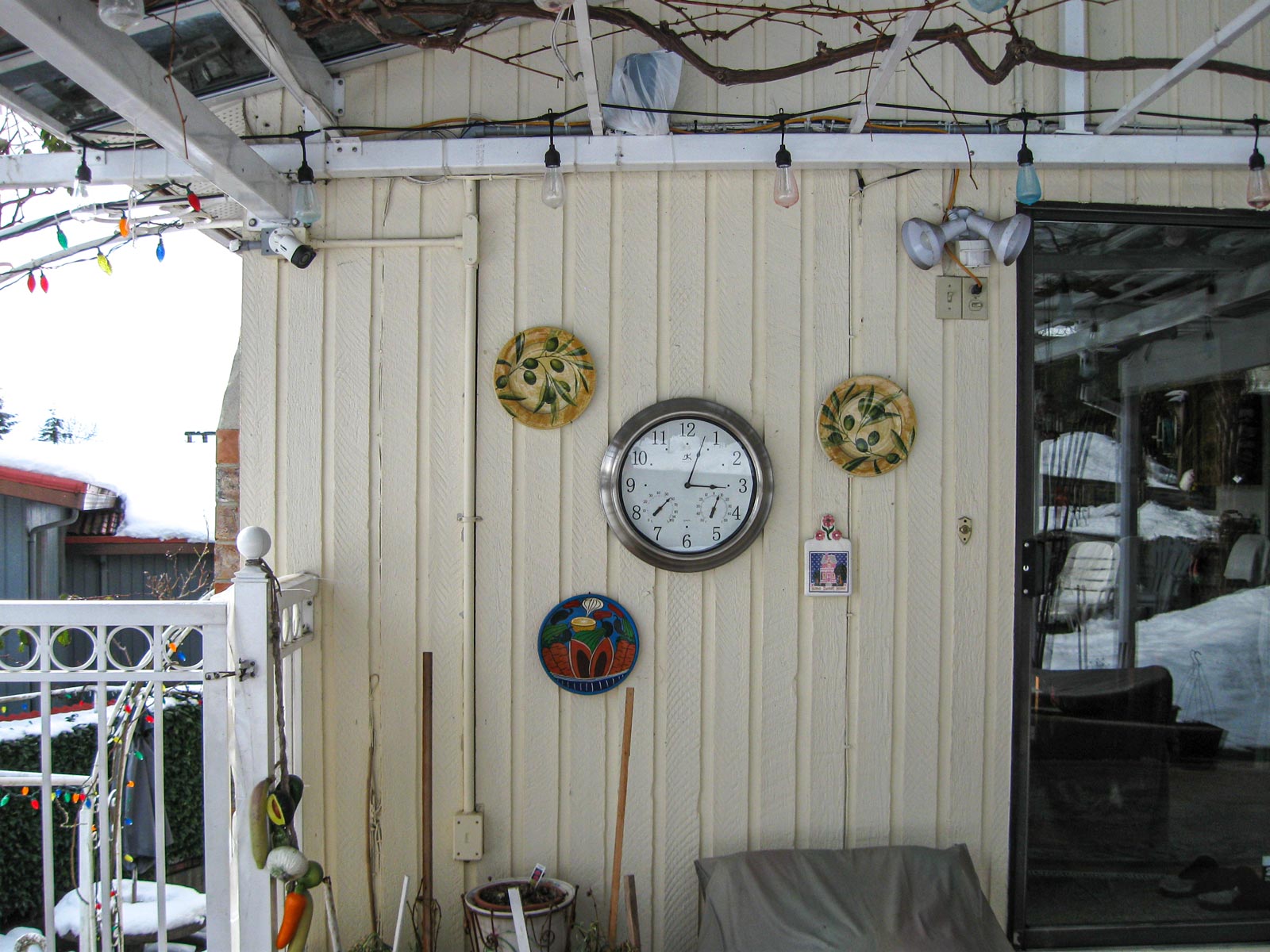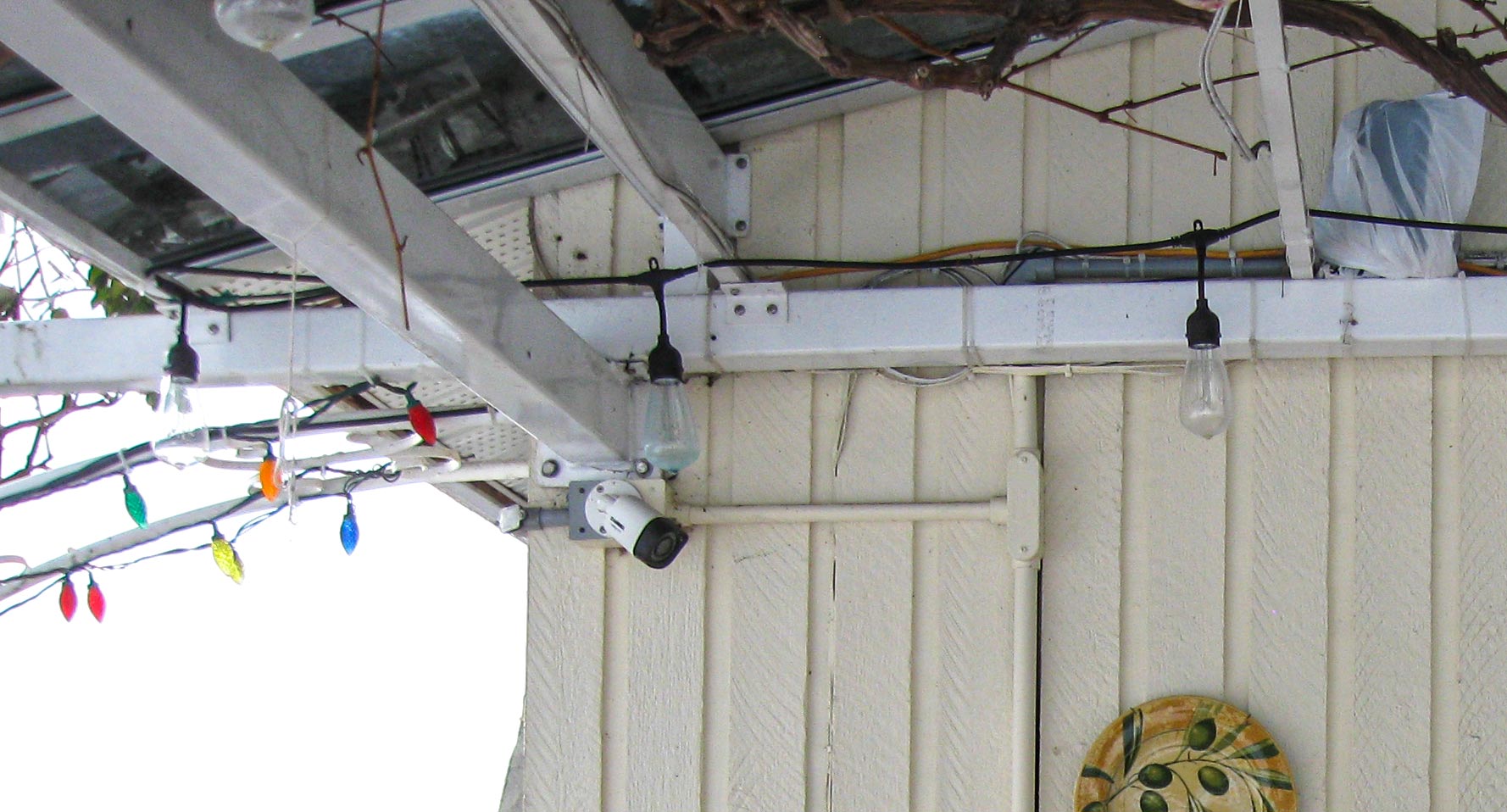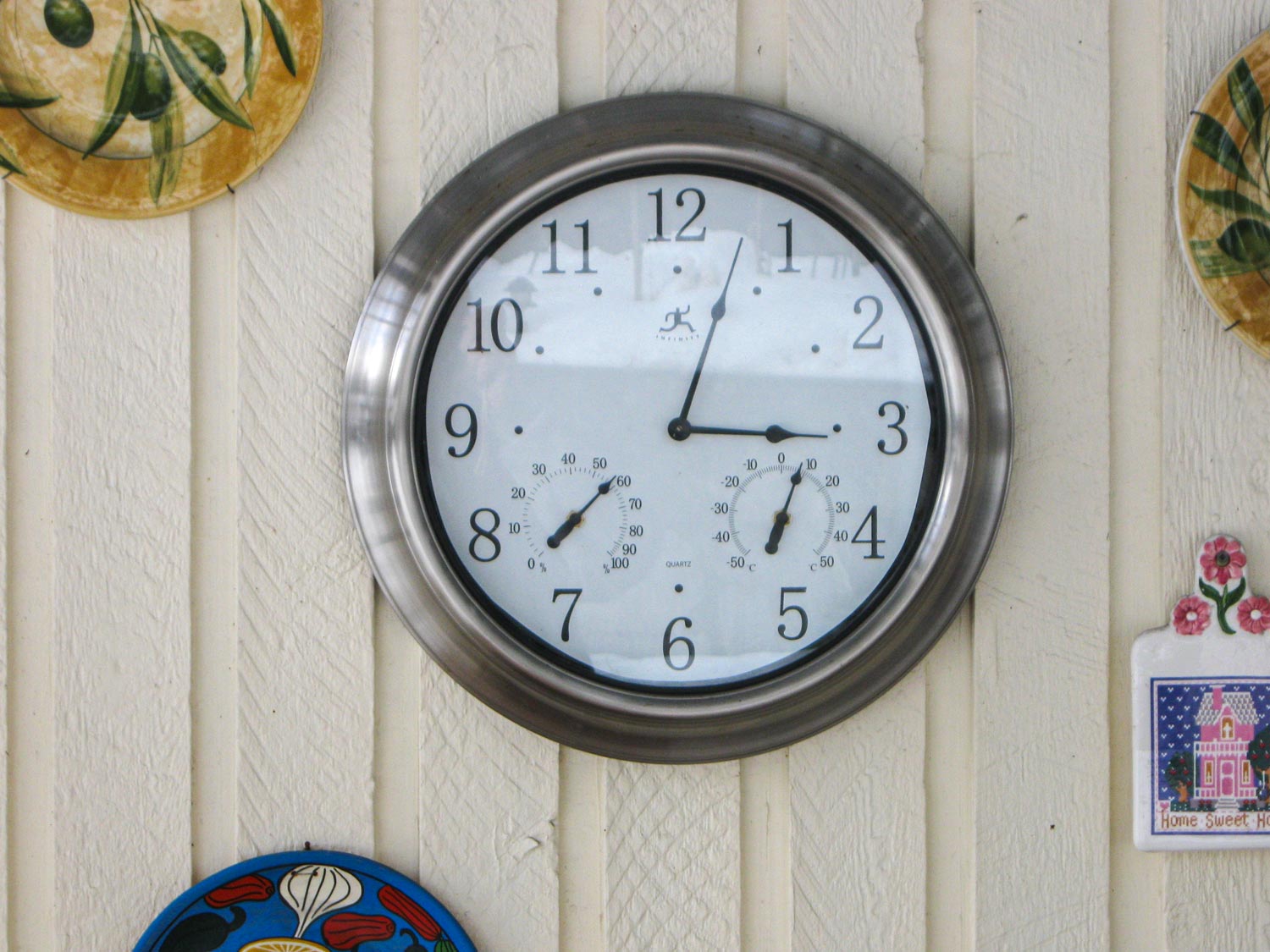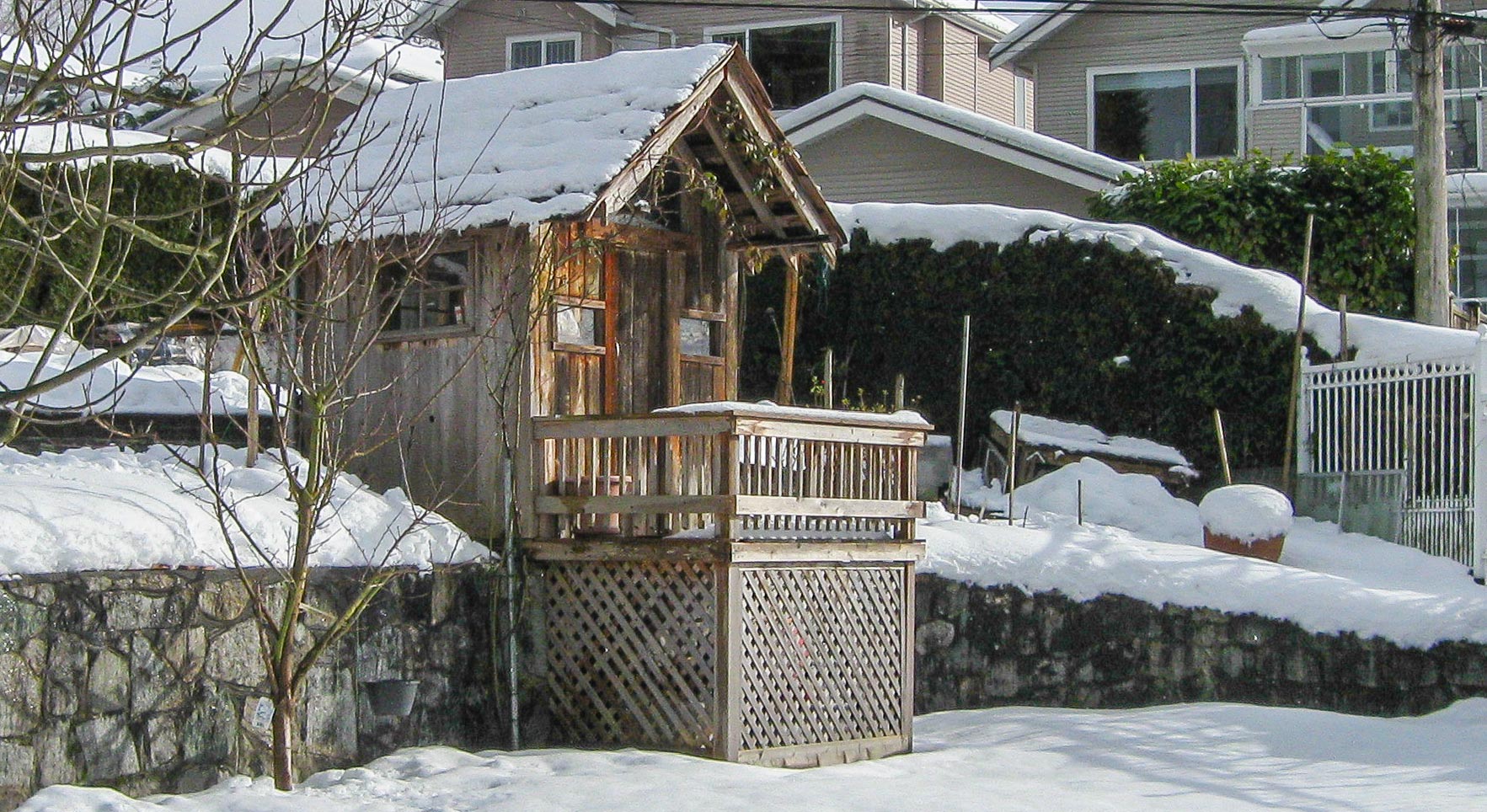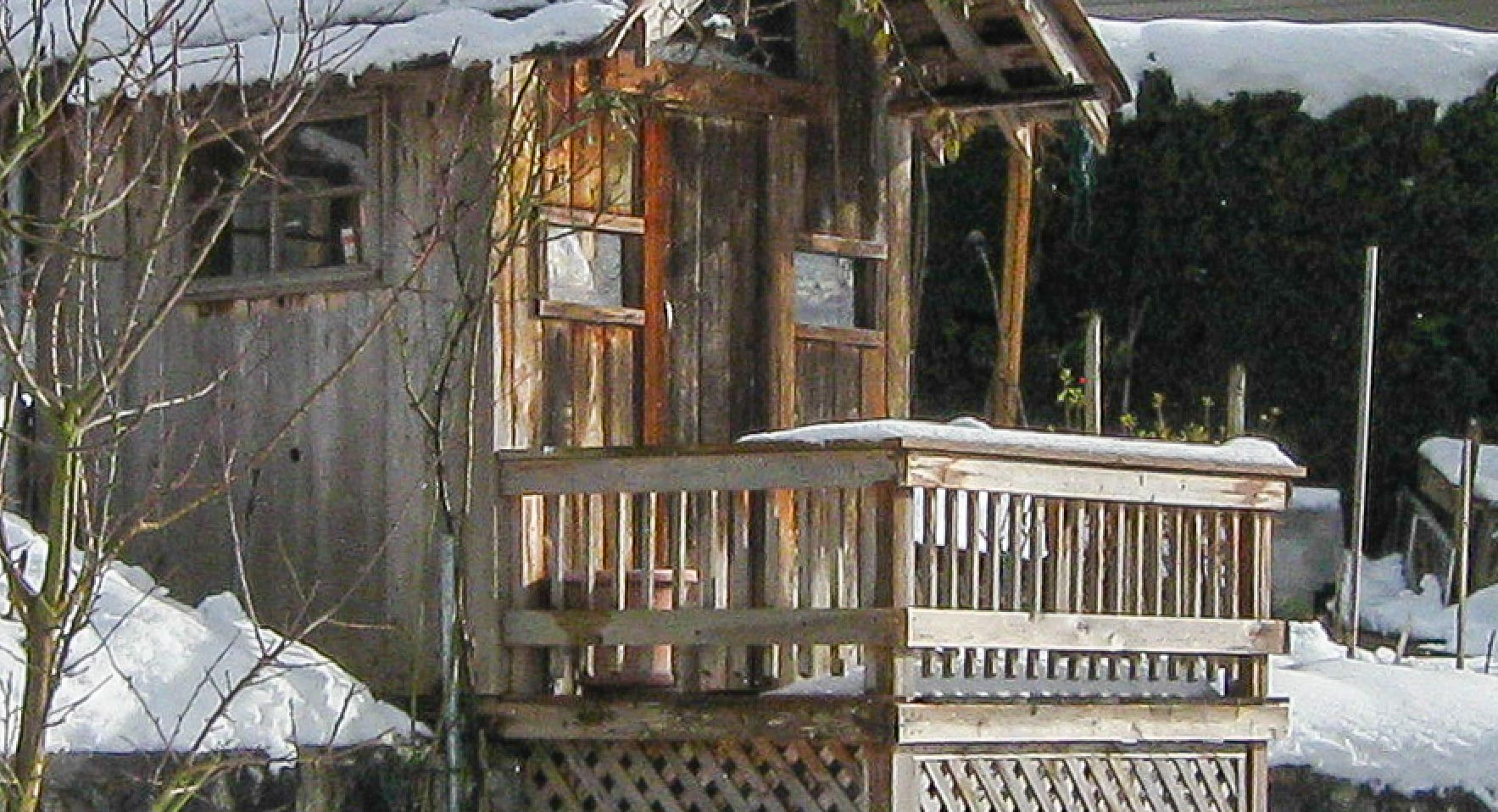PowerShot A590
The PowerShot series of cameras began in
1998 with the PowerShot A5 and its 5mm f/2.5
lens and .81 mpx images. Fourty models
later the Canon PowerShot A590 was
introduced in 2008. By this time we were up
to a 4x optical zoom lens, image stabilization
and 8mpx sensor. How far we came in ten
short years!
The lens is a 5.8 to 23.2 mm (35 to
140mm 35mm equivalent) with f/2.6-5.5 aperture.
The camera has an optical and mechanical shutter
and can shoot from 15 seconds to 1/2000th of a
second. The ISO range is 80 to 1600 in auto mode. Below a shutter
speed of 1.3 seconds the camera applies image noise reduction.
Canon says there are 19 shooting modes comprising a range of automatic and manual settings. In continuous shooting mode it can capture 1.4 shots per second. Images are saved in JPEG files of varying sizes the largest of which is 3264 x 2448 pixels. Video is captured in AVI format.
On the top deck is the on/off button, the shutter button and zoom control lever and, of course, the function selector wheel.
On the bottom is the battery compartment and the separate SD chip slot. There is a tripod screw mount as well.
One feature of this camera that is really convenient is that it is powered by two AA batteries which are available everywhere.
I do not pretend this to be a full review of the Canon PowerShot A590 camera. Those can be found elsewhere I am sure. The full specifications can be found in the Canon Museum here. You can also find the specifications at dpReview here.
If you have questions about the operation of the A520 you can always read the Camera User Guide.
So, how does it Shoot?
This is a nice little camera. It is small enough to carry in your pocket but large enough that you can get a good grip on it. It has the ability to shoot using manual settings but there seems little point as it has been optimized to shoot in auto mode. And this it does beautifully.
When I got the camera the previous owner had been changing settings so I simply went into the menu and hit the reset button. I then went outside and took some pictures in “Auto” mode. The resulting images were well exposed although a little flat. The shutter was silent but it made a mechanical chirp so that I knew a picture had been taken.
I processed the images slightly to overcome what I felt was a lack of color and contrast. It was possible to find the color and depth that I wanted although the images were recorded as jpeg’s.
At 5.8mm, the widest setting, the camera chose f/2.6 at ISO 80 and 1/800th of a second. This is the full frame from the camera.
At 23.2mm, the longest setting, the camera chose f/5.5 at ISO 100 and 1/250th of a second. Again, this is the full frame from the camera.
The Canon PowerShot A590 is a great little camera. If you remember what the camera was intended for it is way more than adequate. I would not have chosen the settings the camera did. It seemed to go for low ISO probably because these small cameras have noise problems if you get up around ISO 400 or higher. And the camera is chosing fast shutter speeds because the entry level photographer probably flinches when he shoots and you want to avoid that affecting the pictures.
Personally, I know I can hand hold at 1/60th of a second with no trouble so I would have gone for smaller apertures to get maximum performance out of the lens. But all of that said, for the intended audience for this camera, it is great.
This website is the work of R. Flynn Marr who is solely responsible for its contents which are subject to his claim of copyright. User Manuals, Brochures and Advertising Materials of Canon and other manufacturers available on this site are subject to the copyright claims and are the property of Canon and other manufacturers and they are offered here for personal use only.

